 If the same quantity be both added to and subtracted from another, the value of the latter will not be changed. 6. If a quantity be both multiplied and divided by another, its value will not be changed. If the same quantity be both added to and subtracted from another, the value of the latter will not be changed. 6. If a quantity be both multiplied and divided by another, its value will not be changed.  Common School Algebra - Page 3by Thomas Sherwin - 1855 - 238 pagesFull view Common School Algebra - Page 3by Thomas Sherwin - 1855 - 238 pagesFull view - About this book
 | Thomas Sherwin - Algebra - 1841 - 314 pages
...equal to a third, are equal to each other. 8. The whole of a quantity is greater than a part of it 9. The whole of a quantity is equal to the sum of all its parts. SECTION I. EQUATIONS OF THE FIRST DEGREE, HAVING ONLY UNKNOWN TERMS IN ONE MEMBER AND KNOWN QUANTITIES... | |
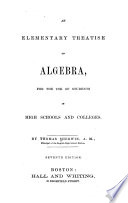 | Thomas Sherwin - Algebra - 1841 - 320 pages
...equal to a third, are equal to each other. 8. The whole of a quantity is greater than a part of it 9. The whole of a quantity is equal to the sum of all its pari« SECTION I. EQUATIONS OF THE FIRST DEGREE, HAVING ONLY UNKNOWN TERMS IN ONE MEMBER AND KNOWN... | |
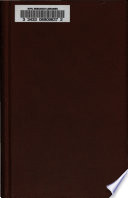 | James Bates Thomson - Geometry - 1844 - 268 pages
...equal quantity, its value will not be altered. 9. The whole of a quantity is greater than a part. 10. The whole of a quantity is equal to the sum of all its parts. 1 1 . All right-angles are equal to each other. 12. From one point to another only one straight line... | |
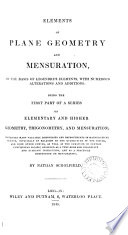 | Nathan Scholfield - 1845 - 894 pages
...will be equal. 7. If equal quantities are divided by equal quantities, the quotients will be equal. 8. The whole of a. quantity is equal to the sum of all its parts. 9. Things which coincide or fill the same space are identical or mutually equal in all their parts.... | |
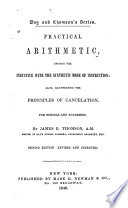 | James Bates Thomson - Arithmetic - 1846 - 362 pages
...quantity, its value will not be altered. 10. The ichole of a quantity is greater than a part. 1 1. The whole of a quantity is equal to the sum of all its parts. OBS. The term quantity signifies any thing which can be multiplied, divided, or measured. Thus, numbers,... | |
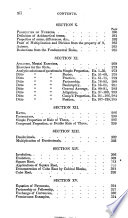 | James Bates Thomson - Arithmetic - 1846 - 354 pages
...equal quantity, its value will not be altered. 9. The whole of a quantity is greater than a part. 10. The whole of a quantity is equal to the sum of all its parts. OBs. The term quantity signifies any thing which can be multiplied, divided, oimeasured. Thus, numbers,... | |
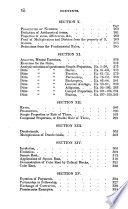 | James Bates Thomson - Arithmetic - 1846 - 402 pages
...equal quantity, its value will not be altered. 9. The whole of a quantity is greater than a part. 10. The whole of a quantity is equal to the sum of all its parts. OBs. The term quantity signifies any thing which can be multiplied, divided, or measured. Thus, numbers,... | |
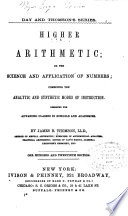 | James Bates Thomson - Arithmetic - 1847 - 432 pages
...equal to the dividend, the work is right. Note. — This mode of proof depends upon the principle that the whole of a quantity is equal to the sum of all Us parts. (Ax. 11.) 125. Fifth Method. — First cast the 1 1 s out of the divisor and quotient, and... | |
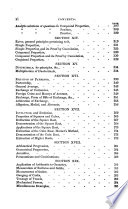 | James Bates Thomson - Arithmetic - 1847 - 426 pages
...Xrcfiicr. For, thediUVrence and the less number are the two parts into which the i.'mdcr in separate J, and the whole of a quantity is equal to the sum of all ill parts. (Ax. 11.) 7 4. Second Method. — Subtract the remainder from the greater of the two given... | |
 | James Bates Thomson - Arithmetic - 1848 - 434 pages
...For, the difference and the less number are the two parts into which the greater is separated, and the whole of a quantity is equal to the sum of all its parts. (Ax. 11.) 7 4. Second Method. — Subtract the remainder from the greater of the two given numbers... | |
| |